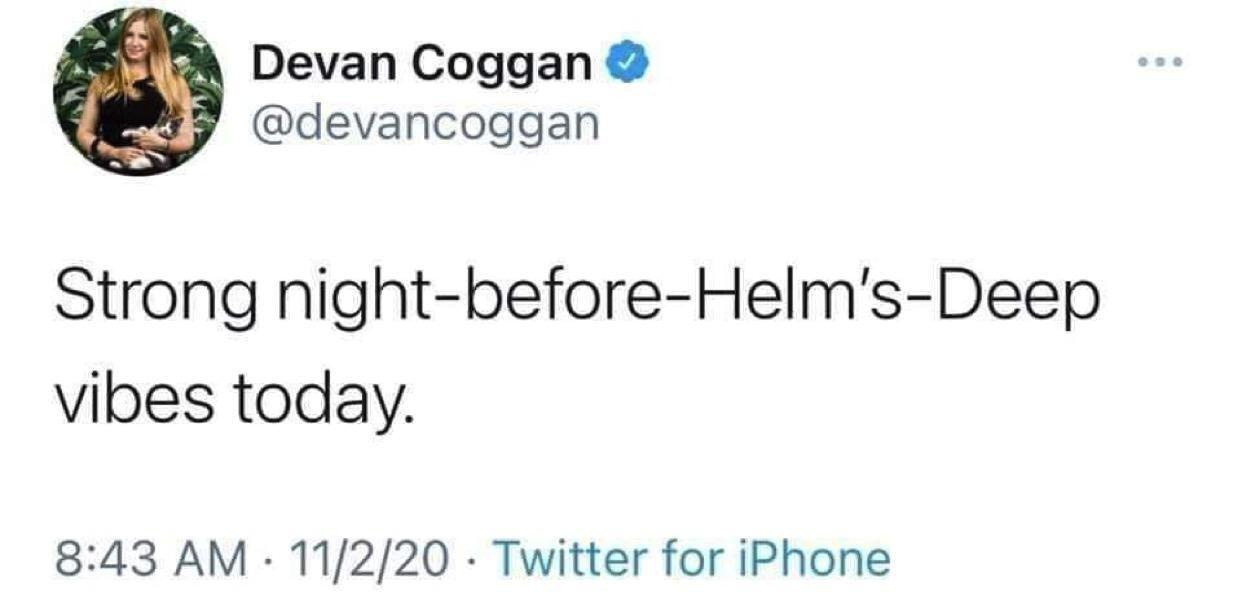Here we go again. Just like four years ago, only this time hopefully with a better final chapter. And also, this time with a twist: this isn’t a Game Day thread, but more like a Game Week Thread.
So first things first: if you haven’t voted yet you should go do that. Is voting in person safe? Sure. Just be smart about it. Wear a mask. Take some hand-sanitizer if you can. When you’re indoors at your polling place, maintain social distance. Do what you can to research your local ballot so you know what you’re going to vote on before you get there, so that when you do get to vote you make your selections quickly and submit your ballot and leave. Easy peasy!
So, um, who’s gonna win?
No one knows. Seriously. You can look at the FiveThirtyEight prediction model, which currently has Joe Biden sitting at 89%. Or the Economist model, which shows Biden at 96%. All things being equal, you’d sure rather be Joe Biden than Donald Trump as things stand now.
But it’s important to realize: these are (sort of) probabilities and nothing else. If you’re reading this, you’re probably a gamer. You’ve rolled a 1 on an 8- or 10-sided die before. That’s the probability that Trump wins a second term. We’ve all missed that 89% point blank shot in a game of XCOM. That’s kind of where we are right now. (And to be fair to the FiveThirtyEight folks, they describe their prediction model as more of a map of an uncertain outcome than a probability.)
And the uncertainty on this race in 2020 isn’t just window-dressing for clicks. Well, most of it isn’t, anyway. The 2020 Presidential Election is taking place under extraordinary circumstances, as a pandemic’s third peak seems headed into full bore. As a country, we’ve never had more voting by mail, or early voting in person. As new polls went into the field in the final weeks of October, all the early and by-mail voting created an entirely new-ish set of variables for pollsters. And new variables is a fancy way of saying “New stuff that could make polls wrong again.” Especially if we hit 160 million votes cast. That would be 67% of the US voting eligible population – the most since William McKinley and his upstart running mate Teddy Roosevelt won in 1900.
The good news is that the polls have also held pretty stable, for months and months now. And most folks don’t generally change their views about whom to vote…too much. We think. The other thing to understand is that most of the folks running high-quality polling operations aren’t stupid. On social media you’ll see folks trying to dissect polls from reputable pollsters on some perceived flaw or another, and it happens constantly, as if the data scientists and communications experts who design polls just fell off the turnip truck. Occasionally, you will see terrible polling design (the incorrect framing of a Gallup question on Medicare For All at the end of 2018 pretty much derailed the presidential campaigns of Kamala Harris, Cory Booker, and Kirstin Gillibrand before they’d even started). More common is just opaque methodology that may be disguising more sinister intent. But you can take some assurance: the folks doing polls with highly rated non-partisan polling outfits have put some care into the design and methodology of their surveys.
Still, lots of us also remember the most awful 90 minutes ever, from 8:30 pm ET to 10:00 pm ET on Election Day 2016. That’s when rural votes in Florida, Pennsylvania, Michigan, North Carolina, Wisconsin et al starting pouring in, with historically unprecedented wipeout margins for Candidate Trump being posted by these precincts. There’s likely to be some version of that happening again in 2020. The hope with Team Biden is that the margins won’t be quite what they were in 2016, and that they’ll be somewhat smoothed over by suburban counties that were toss-ups or even red in 2016 going more blue this year.
It’s not a vain hope; there’s a reason polling shows Biden with a lead right now. Although the breakout stars of the 2018 “Blue Wave” of congressional representatives elected that cycle were capital-L Left candidates in Alexandria Ocasio Cortez and “The Squad”, the real fuel of the wave were folks like Elissa Slotkin, Katie Porter, Elaine Luria, Joe Cunningham, Kendra Horn, Ben McAdams and Conor Lamb who all ran as somewhat more moderate Democrats and flipped their red suburban and exurban districts to blue. The congressional district-level polling we have supports the notion that 2020 is set to continue that trend.
Finally, there’s this: as it stands here, late on a Monday, President Trump is going to need a polling error in 2020 far greater than the polling error he got in 2016 in order to win. That doesn’t mean that can’t happen – ask Tom Dewey about that. And it should also be noted that polling error doesn’t always go one way; in 2012 many of the polling errors that were seen favored Barack Obama. And polling error isn’t necessarily uniform. Even in the debacle of 2016 with state-wide polling errors across the upper Midwest, there were also state polling miscues evidenced in the American southwest that favored Clinton a bit.
<>



